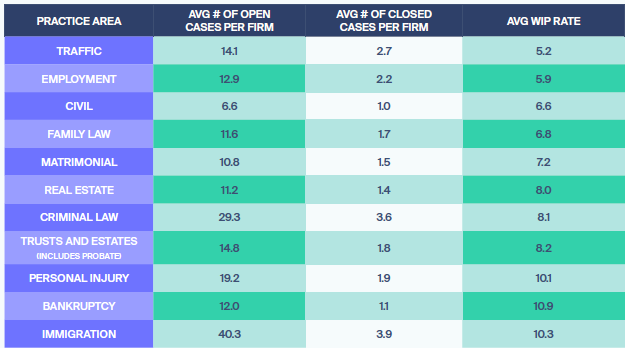Let’s face it, hourly billing is cursed in so many ways. But for the lawyers who bill by the hour, perhaps the greatest curse is simply have to keep track of their time. That is why several companies in recent years have developed passive timekeeping tools for lawyers — tools that keep track of a lawyer’s time even when the lawyer forgets to.
Now, an analysis of passive timekeeping data by the law practice management company MyCase finds that lawyers who use passive timekeeping billed an extra 64 hours last year. Assuming an hourly billing rate of $350, that adds up to an additional $22,425 those lawyers were able to invoice.
The finding came in the first of a series of three benchmark reports to be published this year by MyCase and its sibling company LawPay. This first report, published last week, looks at law firm productivity, using anonymized data from lawyers who are MyCase customers.
Learn more about MyCase on the LawNext Legal Technology Directory.
It found that, overall, the number of billable hours lawyers captured using the time-tracking tools in MyCase more than doubled from 2021 to 2022, for a total of 18,426,955 hours.
But for lawyers who used Smart Time Finder, a feature that tracks all of a lawyer’s activity within the MyCase platform, they captured an additional 579,665 hours. At that $350 hour rate, that ads up to additional billables of nearly $203 million.
In addition to timekeeping, the benchmark report also looked at other key performance indicators among MyCase customers. For this part of the report, it looked only at solo lawyers, because they are most likely to use a single billing method.
One of the KPIs the report studied was utilization rates — or the number of hours billed in an eight-hour workday. Here, in addition to looking only at solos, it further narrowed the field to only solos who had more than 1,000 time entries a year, reasoning that they handle a statistically significant number of cases that involve hourly billing.
For that group, the data showed that they bill an average of 3.1 hours per day, for a utilization rate of 39%.
However, for solos who had at least 5,000 time entries in 2022, their utilization rate was notably higher. They billed 6.1 hours a day, for a rate of 76%.
Another KPI that the report examined was work in progress by practice area, or the ratio of active matters to the number of matters closed over a period of time.
“The WIP rate is important because it provides insight into how efficiently your firm’s caseload is managed and helps law firms understand the percentage of their workload that is in progress,” the report said.
It found that the practice areas with the highest WIP rates are bankruptcy, immigration and personal injury, while those with the lowest are employment and traffic.
The final productivity benchmark the report examined was the number of court date reminders sent to clients. Overall, MyCase customers sent 92,439 court date reminders to their clients in 2022. By practice area, the average per-case number of reminders sent was highest in personal injury and bankruptcy, and lowest in family law and matrimonial.
The report was written by Nicole Black, senior director, SME and external education, at MyCase. MyCase will be releasing additional benchmark reports later this year.
 Robert Ambrogi Blog
Robert Ambrogi Blog
